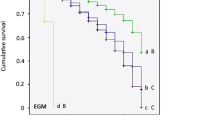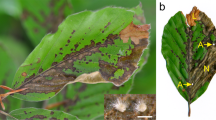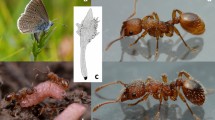Abstract
THE pine shoot moth, Evetria buoliana, Schiff., one of the best known Lepidopterous pests of young Scots pine in Europe, has during the past decade been causing much concern by its increasing prevalence in the numerous young pine plantations in East Anglia. Just over a year ago a thorough study was begun of the biology and forest relations of the species, the first results of which have been worked out. Amongst other things it has been found that a slight check is exercised on the increase of the insect by a number of different species of parasites which oviposit in the newly hatched caterpillars and the flight periods of which correspond roughly to that of the moths, and in this connexion an interesting fact has already been brought to light.
This is a preview of subscription content, access via your institution
Access options
Subscribe to this journal
Receive 51 print issues and online access
$199.00 per year
only $3.90 per issue
Buy this article
- Purchase on Springer Link
- Instant access to full article PDF
Prices may be subject to local taxes which are calculated during checkout
Similar content being viewed by others
References
E. Meyrick, "Revised Handbook of British Lepidoptera", 1927.
P. H. Timberlake . "Experimental Parasitism", U.S. Department of Agriculture. Bur. Ent. Tech. Ser., No. 19, Pt. 5, 1912.
J. D. Tothill . "Natural Control of the Fall Webworm." Dom. Can. Dept. of Agric. Ottawa, Bull. 3, 1922.
Author information
Authors and Affiliations
Rights and permissions
About this article
Cite this article
BROOKS, C. Recovery from Parasitism. Nature 125, 14–15 (1930). https://doi.org/10.1038/125014b0
Issue Date:
DOI: https://doi.org/10.1038/125014b0
This article is cited by
-
Die Unempfänglichkeit der Raupen von Loxostege sticticalis L. und Pieris brassicae L. gegen Parasiten
Zeitschrift für Parasitenkunde (1933)
Comments
By submitting a comment you agree to abide by our Terms and Community Guidelines. If you find something abusive or that does not comply with our terms or guidelines please flag it as inappropriate.



